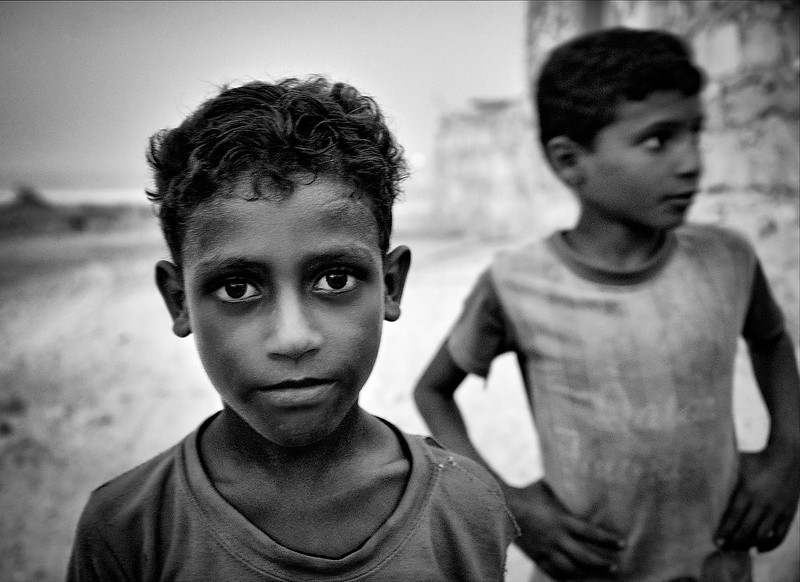The Threat Of Famine In Yemen Is Imminent
 Yemen is currently facing one of the world’s worst humanitarian crises, exacerbated by eight years of civil war since 2015. There is a struggle with economic instability, high unemployment, civil unrest and the threat of famine in Yemen. According to the World Food Programme (WFP), approximately 17 million Yemenis are experiencing food insecurity, with 3.5 million pregnant/breastfeeding women and children under 5 suffering from malnutrition. Oxfam reports a surge of nearly 11 million Yemenis facing food insecurity in the past four years, totaling around 20 million people.
Yemen is currently facing one of the world’s worst humanitarian crises, exacerbated by eight years of civil war since 2015. There is a struggle with economic instability, high unemployment, civil unrest and the threat of famine in Yemen. According to the World Food Programme (WFP), approximately 17 million Yemenis are experiencing food insecurity, with 3.5 million pregnant/breastfeeding women and children under 5 suffering from malnutrition. Oxfam reports a surge of nearly 11 million Yemenis facing food insecurity in the past four years, totaling around 20 million people.
During the civil war in 2017, Yemen’s ports were blocked due to military conflict, severely limiting the supply of food and medicine. This blockade worsened the humanitarian crisis, leaving millions of Yemenis facing food insecurity and limited access to health care. The outbreak of COVID-19 in 2020 further compounded the hunger crisis and deteriorated health conditions. The war in Ukraine has also contributed to the spread of the epidemic in Yemen, with additional restrictions on grain supplies.
The threat of famine in Yemen puts breastfeeding mothers and children at significant risk of malnutrition and death. The recent devaluation of Yemen’s currency, the Riyal, coupled with rising prices of food and services, has made it even more challenging for families to afford adequate nourishment and health care. Access to medical care for treating malnutrition and other illnesses has become difficult due to escalating health care costs.
Ongoing Efforts
United States Agency for International Development (USAID), in partnership with the U.S. Foreign Disaster Assistance and Food for Peace, supports Yemen with humanitarian aid. The organization has also partnered with the Republic of Yemen Government (ROYG) to provide proper medical treatments and strengthen health care services. In addition to humanitarian assistance, USAID launched development assistance to Yemen in 2017. USAID emphasizes long-term development efforts such as education, infrastructure, economic growth and good governance to build resilience. Potentially, these efforts can help create a more stable and sustainable society where people can protect themselves from crises.
WFP has been working hard to alleviate the impact of famine in Yemen since 2015. The organization provided humanitarian aid to 15.3 million people in 2022 and raised $251.8 million in 2023. Fertilizers and farming equipment are provided to farmers to increase crop production. A total of 23,500 school students are fed every day in 2,173 schools.
As part of Yemen’s food assistance program, the WFP shipped 176,000 tons of food to the country through Oregon’s ships in 2018. Due to Yemen’s reliance on imported food, the WFP is setting up mobile cranes to speed up import unloading. Nearly 13 million people currently receive food assistance from WFP through vouchers and cash transfers. More than 254,000 tons of food were distributed by vouchers and nearly 934,794 tons of food were shipped in shipping containers by the organization in 2021.
Oxfam, another NGO, has assisted more than 3 million people with basic food needs and economic rehabilitation since July 2015, in addition to providing clean water, constructing sanitation facilities and providing hygiene kits.
Looking Ahead
David Gressly, Resident and Humanitarian Coordinator for Yemen highlights the urgent need to act swiftly and sustain an integrated humanitarian response that addresses food and nutrition, clean water, basic health care, protection and other essential needs for millions of people. Famine and economic instability remain significant challenges in Yemen, but initiatives led by organizations like USAID, WFP and Oxfam offer hope through their humanitarian and development assistance, benefiting millions of Yemenis with necessities such as food, clean water, primary health care and protection.
– Simran Raghav
Photo: Flickr
